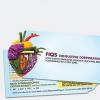hi all,
we are a manufacturer of food ingredient, mainly for food supplement (mineral blending on carrier - all powders)
we've made a blend a tested it and it was found OOS for lead 4.1ppm, limit max 3ppm. the product is OOS and non-conformance has been raised. investigation has been started and it's not an issue with the testing, the blend is OOS. we think we know where it might have come from so this will not happen (hopefully) in the future.
I had in my head that I wasn't allowed to mix unsafe & safe products together to make a safe product, here mixing in the same quantity a batch with has 1 ppm of lead with a batch witch has 4ppm of lead, the blend will have 2.5ppm of lead on average. I've tried to look into ISO22000 and pre-requisite program for food manufacturing and cannot find anything.
I then thought it was in (EC) No 178/2002 but no.
Did I invent my rule or is it somewhere? if so, please guide me to the text - I used to work in pharmaceutical maybe it comes from there?
thank you for your help.
Aurélie


















